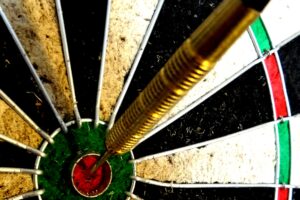December 2009

I would like to encourage you to attend these two important events, one a week-long intensive before the holidays at the end of 2009, celebrating Shakyamuni’s enlightenment while gazing at the morning star, the other stretching over the first quarter of 2010, originally marking the rainy season when the sangha would retire to the caves.
In between is our New Year Sit, December 31, when we welcome in the new year by sitting up until midnight, ringing the big gong (J. kane) and chanting Master Dogen’s 108 Dharma Gates of Illumination, one for each strike of the gong per minute until the stroke of midnight, when we break out the champagne and fireworks and make our offerings to the fire.
The New Year sit is a festive occasion, and quite disorienting in terms of one’s usual perception of time. During the last hour and 48 minutes (= 108), the minute-by-minute peal of the gong has a transformative effect, while sitting in zazen. The gong is still sounding when the next minute is struck, and time seems to shrink into momentary passage, and finally to stand still. One cannot believe that the gong is ringing again already! Chanting Dogen’s brief and repetitive phrases adds to the almost hypnotic effect. It is the best (as well as safest and sanest) way to ring in the new year that I have ever experienced.
If we don’t get the (kyosaku) stick under controlled conditions at the zendo, we get it big time out there, out of control. Same stick.
Zenkai Taiun Elliston, roshi
Now that I have convinced you to attend that event — which is not the stated intent of this piece — I shall attempt to entice you to those in the title. It is impossible to argue that these more intensive experiences are necessary, just as it is for Zen meditation itself. No causal connection can be made, in a logical, linear sense, between the practice of zazen and its beneficial effects. We learn the difference when we stop sitting for some time. If we don’t get the (kyosaku) stick under controlled conditions at the zendo, we get it big time out there, out of control. Same stick.
Similarly, it is impossible to convey, even if one is endowed with great literary, poetic and descriptive gifts, the impact and effect of just sitting for days on end, and all night at the end, of the Rohatsu experience. It would be like trying to describe “The Jimmy Hendrix Experience” (thus the name) to someone who had never heard rock and roll, or the taste of water to a fish. Only once you have gone through it yourself do you have some idea of the import, and impact, upon what you now consider your practice.
Zen meditation bears repetition. Repetition is more important than duration, frequency or regularity. Matsuoka-roshi summed this up in his simple way, as “Don’t give up!” It matters less how often we sit, for how long, or how regularly, than that we simply never give up. No matter how discouraged we may become, how painful and difficult our life is, we return to the cushion. He also said that when we do zazen, we “always have a place to go.” This does not mean that it is an escape, quite the opposite. But we have something we can do that always helps, no matter what the situation. He said that if we can sit for only five minutes, we are a
“buddha for five”; if we sit a half-hour, we are a “buddha for thirty.” But, he would say, wouldn’t you rather be buddha all day? Of course, we can’t sit 24×7. Unless we have servants.
But when we sit virtually all day, and day after day, something changes. In Zen, we cannot really separate the quantitative and qualitative. So it is not simply a matter of toting up the hours. Each hour is different, deeper. The quantitative becomes the qualitative. After Rohatsu, one finds a kind of “re-entry” problem, as attributed to psychedelic drug experience, and PTSD of troops returning from war. One has to re-adapt and re-learn one’s normal routine.
In everyday life, we become inured to the chaos, noise and confusion surrounding us. We are actually numb to experience, owing to the deluge of stimulus, and the nervous system’s natural defense mechanisms. When we sit for long periods of time and repeatedly, we become sensitized again. Our walls of defense fall away. Returning to our regular routine, we find it jarring and irritating. The radio, television, traffic, even the newspaper or a book, can be disturbing. When we return to the cushion, for even a half hour or less, it is a relief, a refuge and sanctuary. This, I think, is one of the deeper meanings of dukkha, the unsatisfactoriness of existence itself. We feel this deeply after long and intense sesshin, and we also feel our zazen differently, more deeply. It becomes not something we feel we have to do, but fortunately, something we get to do.
Now if we extend this to Ango, practice period, it becomes a special period — one which will not happen very often — in our lives. For the Shuso, head student, it is a home away from home, an extended time in residence at a distant place. In the beginning, the 90 days loom large, almost impossible. But by the end, they have flashed by in the wink of a gnat’s eyelash. Time, or perception of it, is distorted in this way, like the Doppler effect on sound. Coming toward us. It rises in pitch; going away it drops noticeably. Time, coming at us, looks like forever; trailing into the past, it is nothing. Looking forward to Ango is like this. Before you know it, it is over.
So Ango is like life. The seeming passage of time is so swift, swifter than an arrow. As Dogen says in Fukanzazengi, “You already have the good fortune to be born with a precious human body, so do not waste your time meaninglessly.” Bears repetition, that last phrase. We know we have wasted our time meaninglessly only when we look back upon the past, immediate or long-term. Wasted youth and all that.
During Winter Ango, January through March 2010, you will have ample, multiple opportunities to enhance your practice. Morning zazen will be available, led by our Shuso, so you can attend before work. The evening program will be extended so you can join after work. Better, before and after work. A full week-long sesshin will be offered each month, so that you may attend any one or all three if you can get the time off. It is a good idea to put together your own program and make a commitment to it for the 90 days. Soon enough it will be over, and by Spring you can look back and see what part of your commitment you were actually able to complete. It is not important whether or not you are able to live up to your commitment, but to make the commitment and then see how it goes. This is how we learn the meaning of practice in daily life.
The time you spend in meditation is like what they say about the time one spends fishing. It doesn’t count against your lifeline. The time you spend in Rohatsu and Ango is not wasted meaninglessly. Please join for the time of your life.
Gassho,
Hojo









